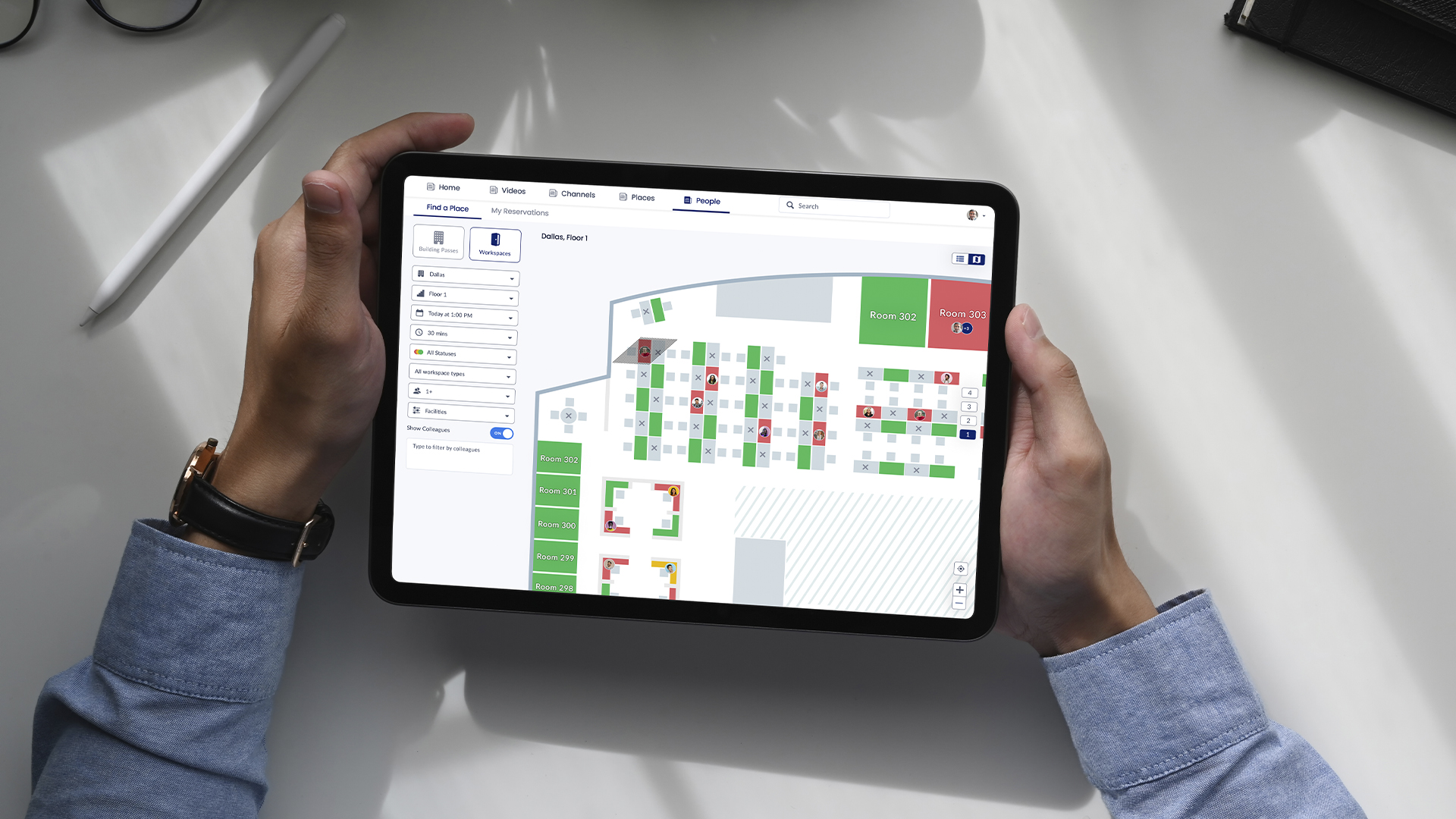There have been a lot of new buzzwords floating around as everyone continues to talk about the workplace of the future. Some terms are easy to understand; others leave us wondering what the heck they even mean.
Two of those terms are hot-desking and desk hoteling. It’s pretty common for these terms to be used interchangeably in the market, but in reality, each represents two completely different things. One might be a better fit for the office culture you’re trying to foster, so let’s take a look at how these two similar but different desking solutions work.
Hot-desking
When someone is talking about hot-desking, they are referring to an office of bookable workstations that are available on a first-come, first-serve basis or ad-hoc. In this scenario, employees or visitors would find an open workspace in the office location upon arrival and reserve it on site.
Hot-desking is an excellent option for companies with flexible work options. These employees are more likely to work from various locations each week and have the option to head to the office on any given day. Flexible work typically doesn’t require a fixed amount of days in the office, so the traffic fluctuates but typically isn’t operating at maximum capacity on most days. This seating arrangement is also suitable for those in creative teams and roles that thrive off of changing scenery and being able to move around to work stations that are appropriate for the type of work they have on their plate that day.
In order to successfully deploy hot-desking, the proper technology is a must. Offices that utilize this sort of seating need to have workstations mapped out in their space reservation tool and the ability to book onsite through a kiosk, room panels, or using an app on a personal device.
Desk Hoteling
In this seating arrangement, rather than working on an ad-hoc basis, this is more of your book-in-advance style seating. Think of it as going on a trip; you have to book your hotel in advance to ensure you have a place to stay. Apply this logic to your seating in this scenario. Employees must book their seating before coming into the office.
Organizations that lean more toward desk hoteling often have smaller offices that do not have as many seats as they do employees. Typically these teams are working in a hybrid model so they don’t need to seat their entire staff on a daily basis. Because of this, hybrid teams that are operating in smaller spaces need to implement some sort of desk reservation system. Desk hoteling is a better option in this instance because employees are planning their in-office days ahead of schedule and are aware of limited space. Nothing would be more disappointing than arriving in the office to see that it is completely full. Desk hoteling ensures that this does not occur.
Similar to hot-desking, desk hoteling requires the proper technology to be successful. Employees would need to be able to see office maps of available, bookable workstations through a space reservation tool. Since this would happen off-site, having mobile or application-based booking is key.
After the deep dive into the two different seating styles, it’s a bit easier to see which one might be a better fit for your team. One thing that they both have in common is the need for space reservation. The Appspace platform can help deploy either seating arrangement with all the necessary supporting technology. If you haven’t looked at our space reservation tool, click here to check it out.


